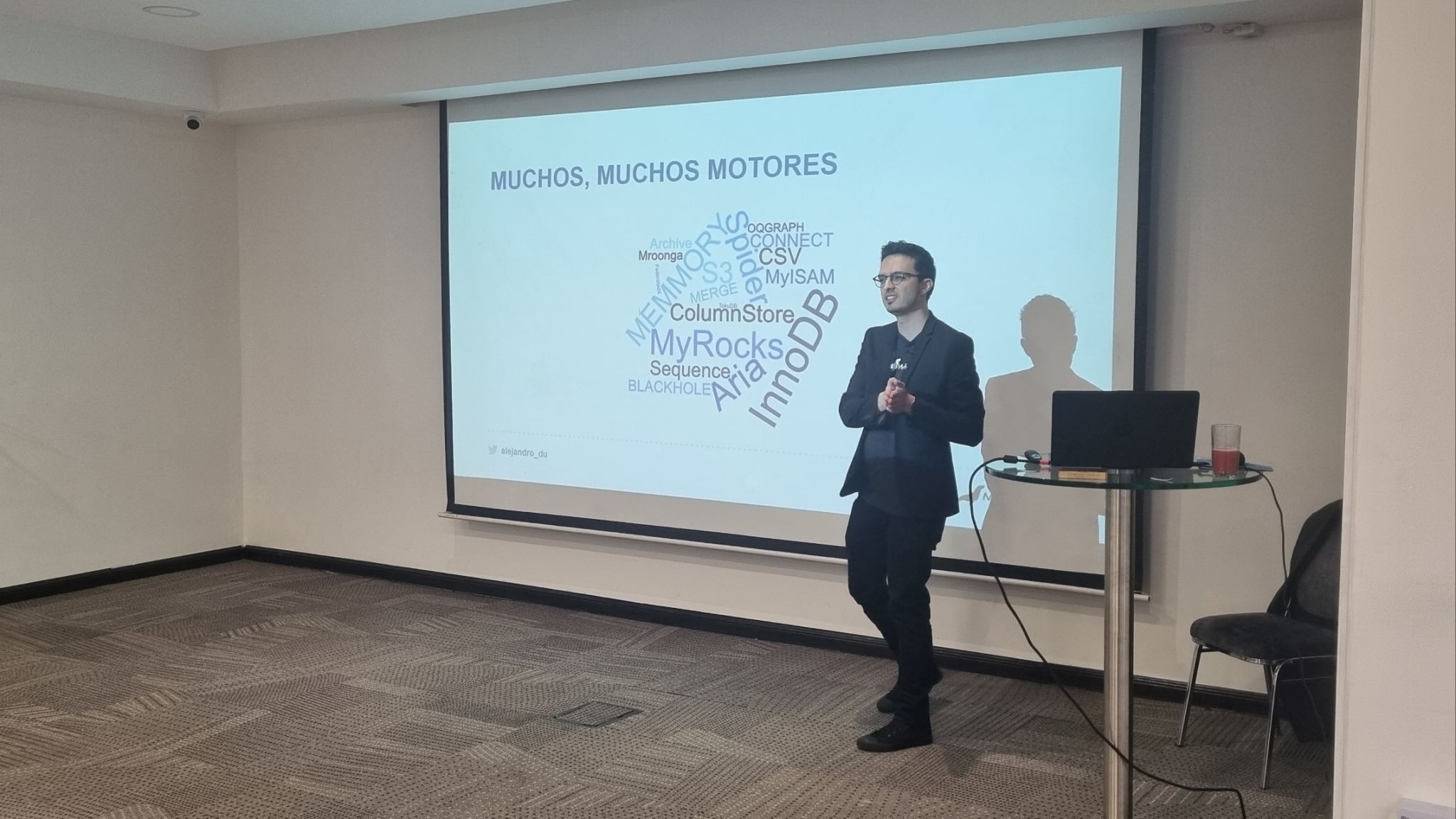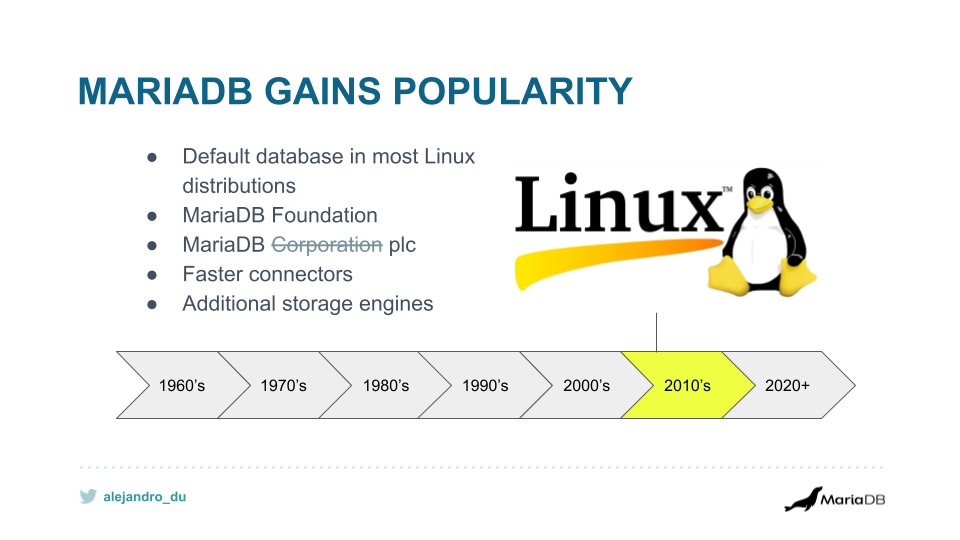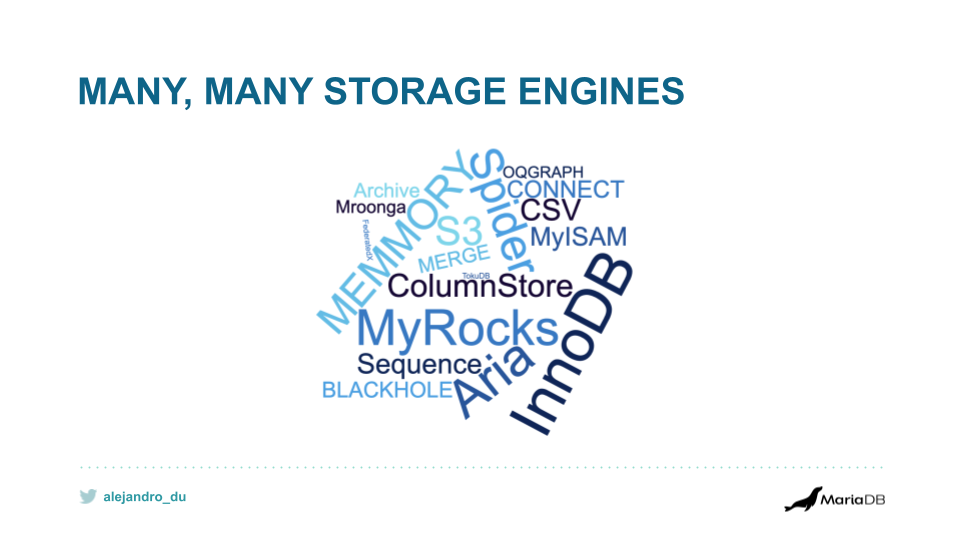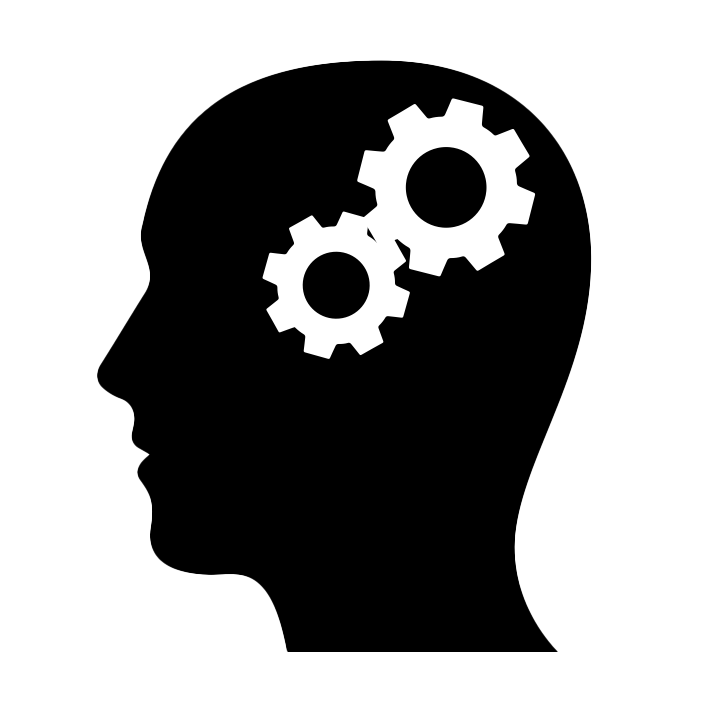Last week, I had the pleasure of giving a talk at the open source event organized by our partner Imagunet in Colombia. The talk, titled “The MariaDB Evolution: From MySQL to SkySQL”, was a journey through the history of relational databases, and how MariaDB has evolved to become the best option for modern database deployments.

I was thrilled to see such a great turnout at the event, and I want to thank the Imagunet team for their excellent organization and planning. It was a fantastic opportunity to engage with a knowledgeable and enthusiastic audience, and I was impressed by the level of engagement and the quality of the conversations we had.

During my talk, I walked through the early days of relational databases, and how the development of MySQL and MariaDB was influenced by projects such as System R, INGRES, and Mimer. I also discussed the origins of SQL, and how it became the standard language for relational databases.
One of the key points of my talk was the story of how Michael Widenius created MySQL in Finland, inspired by the first free SQL database, mSQL. I explained how MySQL (and later MariaDB) gained popularity, and how it helped to shape the Internet itself.

But the story didn’t stop there. I talked about how MariaDB was born as a fork of MySQL, to protect the project and continue innovation. I explained how MariaDB gained popularity as an open-source alternative to MySQL, and how the MariaDB Foundation was created to protect the source code of the database server.
I also discussed the commercial side of MariaDB, and how MariaDB plc (formerly MariaDB Corporation) was created to offer commercial support, faster connectors for multiple programming languages, and additional storage engines to support a mixture of different workloads in a single database. I showed how MariaDB Enterprise adds support for production deployments with increased security, quality, and additional components such as MaxScale and remote observability agents.

One of the highlights of my talk was when I presented MariaDB Xpand, a Distributed SQL implementation compatible with MariaDB and MySQL. I described Xpand as a way of implementing fully automated sharding with replication in a shared-nothing architecture that provides unlimited read and write scale with hotspot detection and data rebalancing while making the whole topology look like a single logical database to application developers.
Finally, I discussed SkySQL, a second-generation cloud database service with machine-learning-based auto scale for transactional or analytical workloads. I showed how SkySQL can perform remote observability, and how it can be used to monitor and manage MariaDB deployments from anywhere.
Throughout the talk, I was impressed by the level of engagement from the audience, and the great conversations that we had. I want to thank everyone who attended for their enthusiasm and curiosity, and for the lively discussions that we had after the talk.

In conclusion, I want to emphasize that MariaDB is more than a fork of MySQL. It’s a modern, innovative, and powerful database platform that is ready to tackle the most challenging workloads. I’m grateful for the opportunity to share this message with such an enthusiastic audience, and I look forward to continuing the conversation with the Imagunet team and our partners in Colombia.
Also, if you, dear reader, want me to present this topic to your company, meetup, conference, or user group, please let me know. I’ll be more than happy to share what the talented team at MariaDB plc and the brilliant global MariaDB community are building around open source.
Enjoyed this post? I can help your team implement similar solutions—contact me to learn more.
